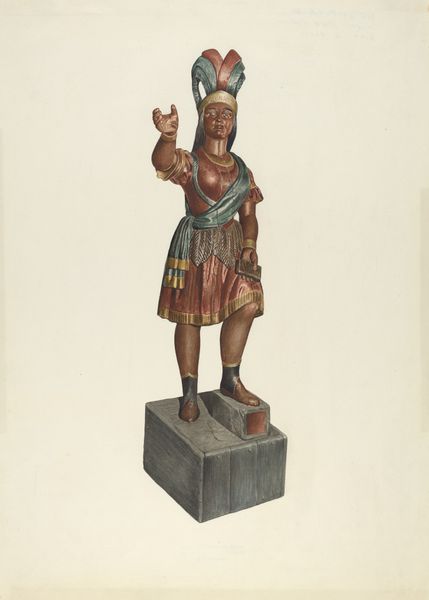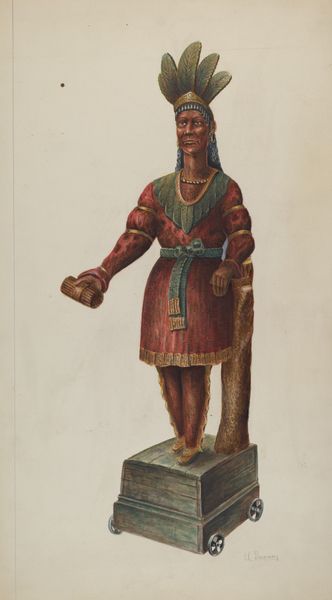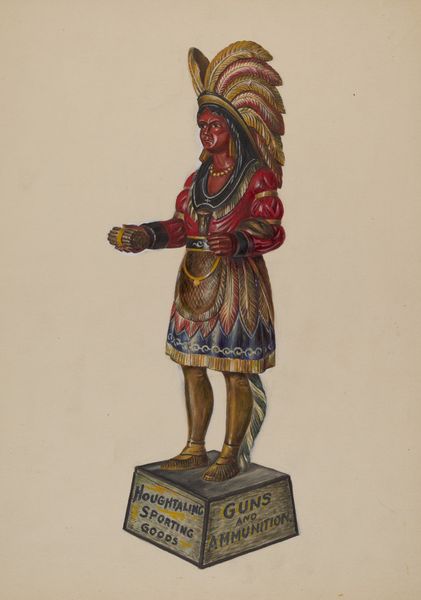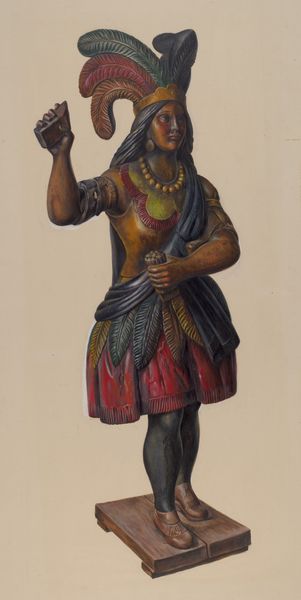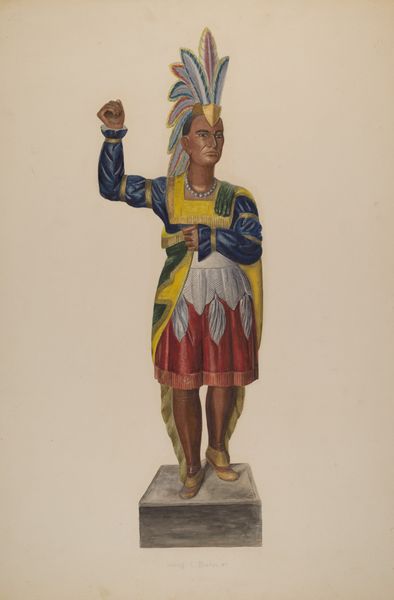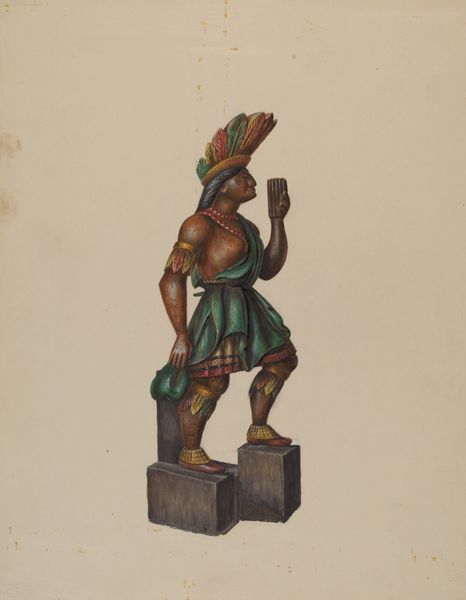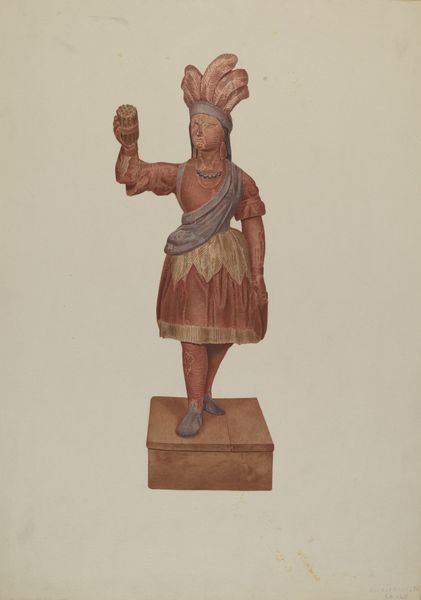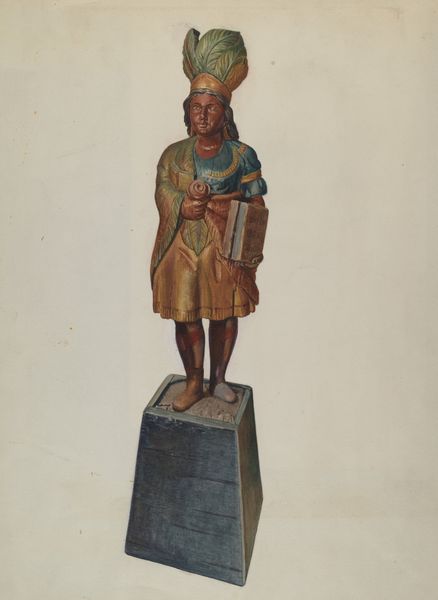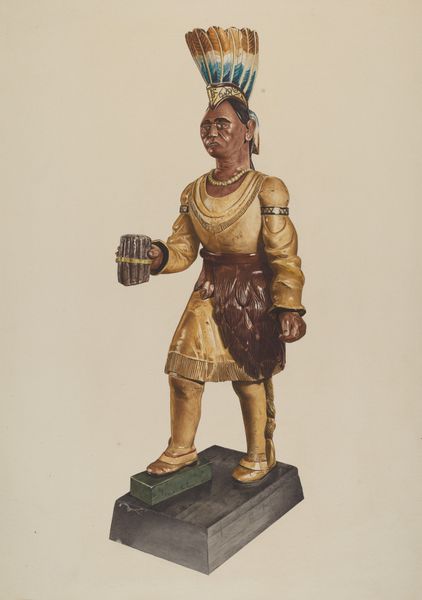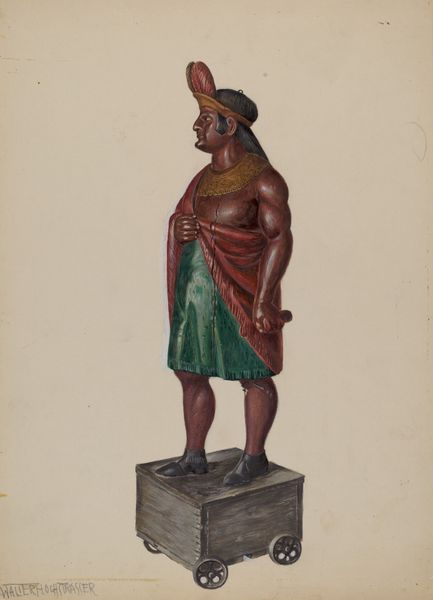
painting
#
portrait
#
painting
#
figuration
#
watercolour illustration
Dimensions: overall: 50.4 x 29.2 cm (19 13/16 x 11 1/2 in.)
Copyright: National Gallery of Art: CC0 1.0
Editor: We're looking at Einar Heiberg's "Cigar Store Indian," created sometime between 1935 and 1942. It's a watercolor and possibly some other media, depicting a sculpture – likely wood. My first thought is the peculiar disjunction between the sharp detail and the very… muted palette. It feels somehow both precise and indistinct. Curator: Indistinct precisely because of the interplay between the forms depicted and the rendering, wouldn't you say? Note how the figure’s idealized anatomy contrasts with the objectness of the cigar store figure—a tension emerges. Editor: Yes, it strikes me that Heiberg captures the *idea* of this figure more than its physical presence. The details—the feathered headdress, the tomahawk—they're all present, but rendered in a way that feels almost… nostalgic, like a faded photograph. I'm more intrigued by what this reveals about the commercial context it evokes. Cigar store Indians were essentially advertising tools. Curator: Intriguing, isn't it? We must also recognize the layering of representations: a drawing *of* a sculpture, which is itself a representation of a person. The semiotics of display are also heightened here. What is not seen? What context does this piece deny to become more aesthetically intriguing? Editor: The sculpture itself, undoubtedly, was fashioned from a readily available material, probably carved, and then painted—likely by skilled but perhaps unsung laborers. And how the labor of Indigenous carvers or communities was likely disregarded or subsumed by the figures these represented in history, too. Curator: Precisely! What seems absent is the perspective of Native communities on this cultural appropriation and its role in commercial imagery. What this drawing excels in depicting is the semiotic value inherent in that absent perspective—making it all the more evident. The structure carries all the weight of the gaze and context around this. Editor: Thinking about the materials then, reminds us of those colonialist roots, where Indigenous cultures became commodified… How does Heiberg’s aesthetic choices engage with or critique this troubling legacy? I keep thinking about this tension between medium, maker, and subject. Curator: Indeed, by rendering the subject so… delicately, in watercolor, the drawing seems to be asking us to consider not the brute physicality of the original carved object, but its symbolic function within a larger social narrative. A kind of distancing effect, maybe. Editor: Perhaps, and in doing so, makes a comment on art-making in an era still wrestling with social narratives and tensions around representation. This is a curious drawing. Curator: Very. A curious encapsulation of signs and meaning, material culture, and a complicated subject, to say the least.
Comments
No comments
Be the first to comment and join the conversation on the ultimate creative platform.
